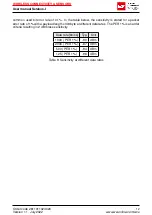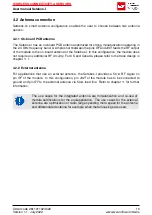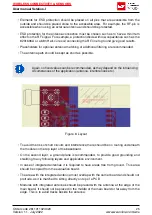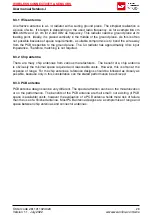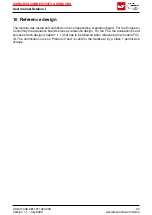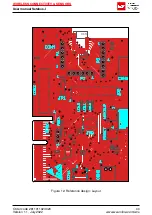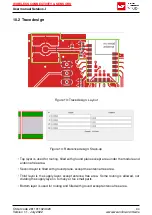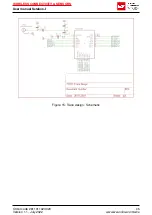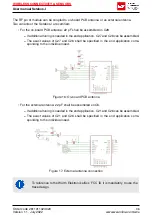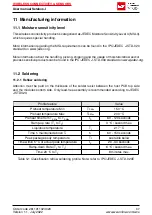
WIRELESS CONNECTIVITY & SENSORS
User manual Setebos-I
• Elements for ESD protection should be placed on all pins that are accessible from the
outside and should be placed close to the accessible area. For example, the RF-pin is
accessible when using an external antenna and should be protected.
• ESD protection for the antenna connection must be chosen such as to have a minimum
effect on the RF signal. For example, a protection diode with low capacitance such as the
8231606A or a 68 nH air-core coil connecting the RF-line to ground give good results.
• Placeholders for optional antenna matching or additional filtering are recommended.
• The antenna path should be kept as short as possible.
Again, no fixed values can be recommended, as they depend on the influencing
circumstances of the application (antenna, interferences etc.).
Figure 6: Layout
• To avoid the risk of short circuits and interference there should be no routing underneath
the module on the top layer of the baseboard.
• On the second layer, a ground plane is recommended, to provide good grounding and
shielding to any following layers and application environment.
• In case of integrated antennas it is required to have areas free from ground. This area
should be copied from the evaluation board.
• The area with the integrated antenna must overlap with the carrier board and should not
protrude, as it is matched to sitting directly on top of a PCB.
• Modules with integrated antennas should be placed with the antenna at the edge of the
main board. It should not be placed in the middle of the main board or far away from the
edge. This is to avoid tracks beside the antenna.
Order code 2611011024020
25
Version 1.1 , July 2022


